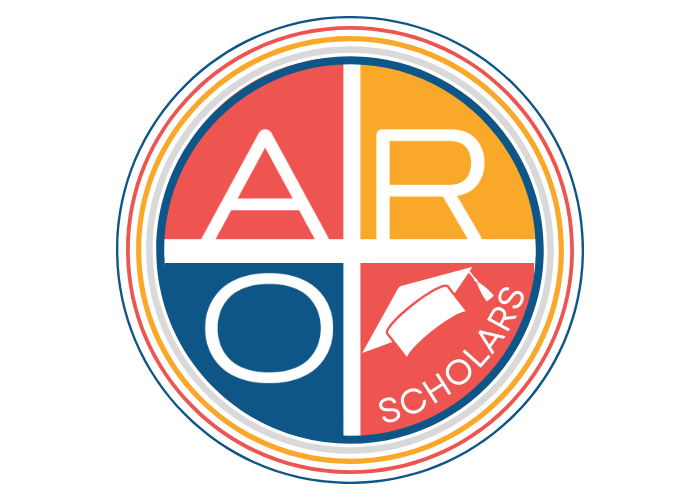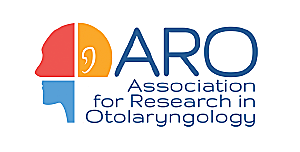
Background
Supported by the Association for Research in Otolaryngology (ARO), the Henderson Fund, the ARO Diversity & Minority Affairs Committee, ARO is introducing a funded experience for undergraduate students to attend the 2024 MidWinter Meeting (MWM) who conduct research in Otolaryngology, Audiology, Hearing Science, or Auditory Neuroscience. The successful applicant will identify mentor(s)and have an interest in, or currently be conducting research. Additionally, the ARO Scholar will have an opportunity to present their research at the MWM. There will be four ARO Scholars awarded this year for the 2024 MWM.
The program is designed to recruit students from groups that are underrepresented in science, with the goal of improving the scientific research in ARO’s mission areas. This program is driven by ARO’s strong belief that science is improved by a diverse set of people, ideas, experiences, and backgrounds. This program will be overseen by the ARO Diversity & Minority Affairs Committee.

Program Details
The ARO Scholar will have the opportunity to present the results of their current research as a poster at the ARO MidWinter Meeting. During the program the Scholar and their mentor are encouraged to have regular meetings. The Scholar is required to attend the ARO MidWinter Meeting, however, should the applicant have a conflict, the program will evaluate on a case-by-case basis:
- February 22-26, 2025 – Orlando, Florida
- Scholar is required to attend the Awards Ceremony
- Scholar is required to actively engage in the MWM by attending sessions
- Scholar is required to provide feedback via the post MWM evaluation survey
The Scholar is also encouraged to present posters at the 2025 meeting.
Each Award will include:
- Opportunity to present a poster at the meeting
- Invitation to attend the 2025 ARO MidWinter Meeting
- An ARO member mentor and a Career Mentor should the Scholar not have one or either in place
- Roundtrip coach air fare up to $500 to attend the ARO MidWinter Meeting
- Up to five (5) nights lodging in the meeting hotel
- Paid MidWinter Meeting registration fee
- Up to $100 for ground transportation to and from the meeting hotel
- Up to $50 per day for 5 days for meals and miscellaneous expenses
Eligibility
Anyone who identifies as being from a group that is under-represented in science is encouraged to apply. These groups include (but are not limited to) those who identify as Black or African American, Hispanic or Latino, American Indian or Alaska Native, Native Hawaiian or Pacific Islander, Sexual and Gender Minorities, individuals with disabilities, and individuals from disadvantaged backgrounds. Members of these groups or other groups that are under-represented in science are encouraged to apply. The applicant must be attending (or planning to attend) an accredited school or university has and must have an interest in the fields of Otolaryngology, Audiology, Hearing Science, or Auditory Neuroscience. The applicant must demonstrate a desire and commitment to research, with one or more designated mentors who may or may not be located at their home institution. The applicant must have the Principal Investigator attest to supporting the Scholars participation in this program. At least one mentor must be an ARO member. Should an applicant not know an ARO member, the ARO Executive Office will assist in finding them an appropriate mentor.
Please read carefully before submitting.
Application Requirements:
All applications must be completed online. Individuals should have the below documents prepared to upload when completing the online application:
For Undergraduate Applicants:
- A curriculum vitae
- A written statement (500 words or less) summarizing the applicants professional goals, description of current/previous research or interest in research and any applicable experience, what the applicant hopes to gain from attending the 2025 ARO MWM, and a short justification describing why the applicant should be one of four chosen Scholars.
- A brief statement describing how you identify as a historically underrepresented group in STEM.
- One letter of current and continued support from an ARO member who is willing to serve as a mentor. If the applicant and mentor are not located at the same institution or in the same city, the applicant should describe his/her plan for maintaining close communication with the mentor. Should an applicant not know an ARO member, the applicant may submit a letter of current and continued support from their current mentor, and the ARO Executive Office will assist in finding them an appropriate ARO member to serve as a mentor.
Only applications submitted online via the application will be accepted. All materials must be uploaded together to be considered for the program and must be received by [TBD for MWM 2025]. Questions about the award may be directed to Kristin Gordy in the ARO Executive Office. She may be reached at headquarters@aro.org. The Diversity & Minority Affairs Committee will select awardees after scoring all the applications in the month November. Awardees will be notified in December. The Award must be used the year of selection.
Once selected, the Scholar will receive communication from the ARO Executive Office with instructions on how to submit their poster if they have not already done so as well as details on award disbursement.
How to Apply
Anyone who identifies as being from a group that is under-represented in science is encouraged to apply. These groups include (but are not limited to) those who identify as Black or African American, Hispanic or Latino, American Indian or Alaska Native, Native Hawaiian or Pacific Islander, Sexual and Gender Minorities, individuals with disabilities, and individuals from disadvantaged backgrounds. Members of these groups or other groups that are under-represented in science are encouraged to apply. The applicant must be attending (or planning to attend) an accredited school or university has and must have an interest in the fields of Otolaryngology, Audiology, Hearing Science, or Auditory Neuroscience. The applicant must demonstrate a desire and commitment to research, with one or more designated mentors who may or may not be located at their home institution. The applicant must have the Principal Investigator attest to supporting the Scholars participation in this program. At least one mentor must be an ARO member. Should an applicant not know an ARO member, the ARO Executive Office will assist in finding them an appropriate mentor.
Please read carefully before submitting.
Application Requirements:
All applications must be completed online. Individuals should have the below documents prepared to upload when completing the online application:
For Undergraduate Applicants:
- A curriculum vitae
- A written statement (500 words or less) summarizing the applicants professional goals, description of current/previous research or interest in research and any applicable experience, what the applicant hopes to gain from attending the 2025 ARO MWM, and a short justification describing why the applicant should be one of four chosen Scholars.
- A brief statement describing how you identify as a historically underrepresented group in STEM.
- One letter of current and continued support from an ARO member who is willing to serve as a mentor. If the applicant and mentor are not located at the same institution or in the same city, the applicant should describe his/her plan for maintaining close communication with the mentor. Should an applicant not know an ARO member, the applicant may submit a letter of current and continued support from their current mentor, and the ARO Executive Office will assist in finding them an appropriate ARO member to serve as a mentor.
Only applications submitted online via the application will be considered. All materials must be uploaded together to be considered for the program and must be received by [TBD for MWM 2025]. Questions about the award may be directed to Kristin Gordy in the ARO Executive Office. She may be reached at headquarters@aro.org. The Diversity & Minority Affairs Committee will select awardees after scoring all the applications in the month November. Awardees will be notified in December. The Award must be used the year of selection.
Once selected, the Scholar will receive communication from the ARO Executive Office with instructions on how to submit their poster if they have not already done so as well as details on award disbursement.
About the Association for Research in Otolaryngology Association
The association was founded in 1973. It is under the direction of the ARO Council that consists of a President, a Past President, a President-Elect, a Secretary-Treasurer, a Communications Officer, Program Committee Chair, and three Council Members At-Large, all of whom are elected from and by the membership. The functions of the organization are established by bylaws carried out with the help of the ARO committees and often with counsel from past presidents.
The ARO is the world’s largest organization of hearing and balance researchers. Members of the Association for Research in Otolaryngology include scientists, engineers and physicians who seek to:
- Understand how the ear and the brain process sound and control balance
- Determine the causes of diseases and disorders of these sensory systems
- Devise new surgical, technological or biological treatments to improve patients’ lives
With its home base in the United States, the ARO has 2200 members located in universities, medical centers, research institutes and biotech industries throughout the world.
Our History
The aims of the Association shall be encouragement and promotion of research, both basic and clinical, in the broad field of Otolaryngology and related areas; to foster friendly assembly and stimulate scientific interest among its members; to this end, the Association shall hold scientific meetings at regular intervals and engage in such activities as the membership deems appropriate to achieve these objectives.
